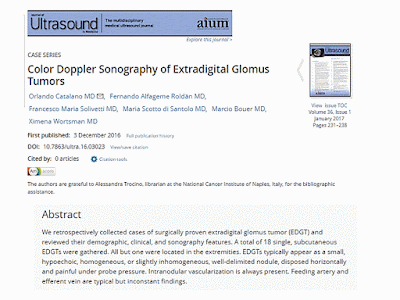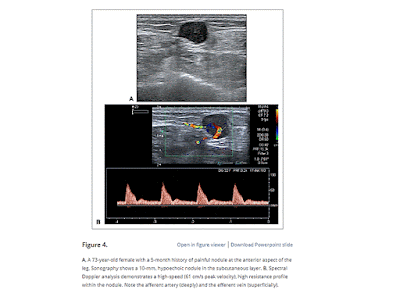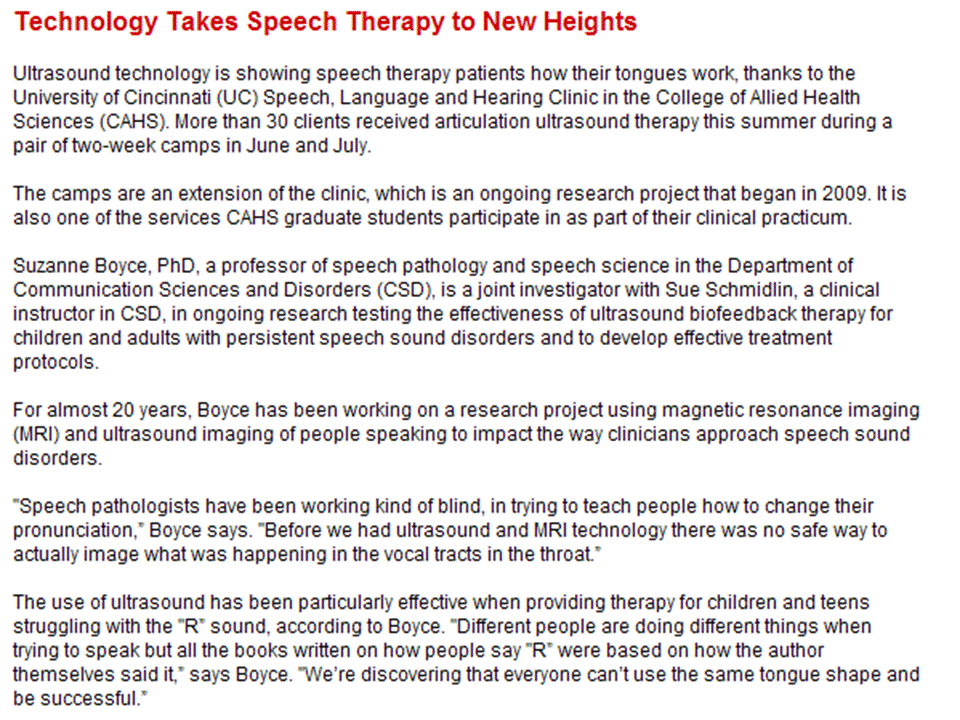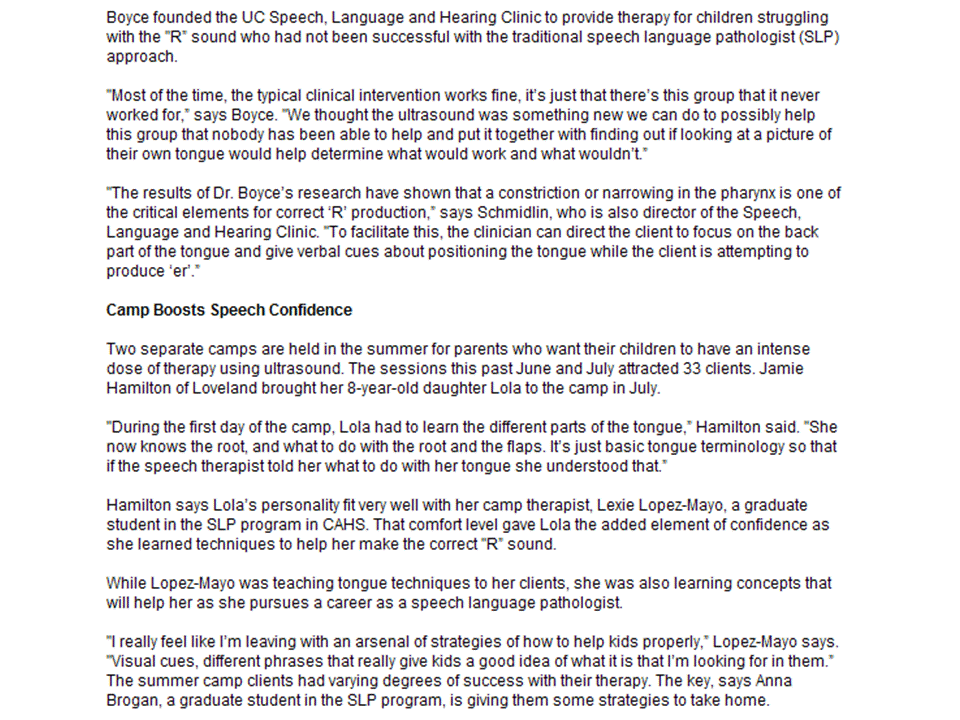LINK DOWNLOAD Ultrasound Med Biol. 2015 May;41(5):1161-79. doi: 10.1016/j.ultrasmedbio.2015.03.007. Epub 2015 Mar 20
....
POINT SHEAR WAVE SPEED MEASUREMENT (PSWSM) AND SHEAR WAVE
SPEED IMAGING (SWSI)
Procedure
All technologies are implemented in a conventional US system
under direct visualization using a curved array broadband transducer. A sample
box is positioned on B-mode image of the liver and elastography measurements
are obtained by pressing a button. Optimal conditions include:
-Fasting;
-Dorsal decubitus position, with the right arm elevated above the head for optimal intercostal access;
-Dorsal decubitus position, with the right arm elevated above the head for optimal intercostal access;
-Resting respiratory
position (breath-hold without deep inspiration);
-ROI placement
beneath Glisson’s capsule by 1.5-2.0 cm to avoid reverberation artifacts and
increased subcapsular stiffness;
- ROI placement to
avoid large liver vessels;
-The median value of
5-10 measurements is considered with PSWSM, and the mean value of 4
measurements with SWSI.
Specific recommendations include:
+For SWSI, the sample box size should be large enough to
reduce the variation between measurements. This provides a cumulative value
that is the average of stiffness at several points, thus being more
representative of the heterogeneous stiffness in abnormal and normal livers.
+For PSWSM, the ROI should be placed perpendicular to the
center of the transducer surface as the angle of insonation may have a slight
but significant influence on the result.
Results
Point Shear Wave Speed Measurement.
As of today, there are two techniques: Virtual Touch Tissue
Quantification (VTTQ) technique that expresses the results in m/sec (Figure 3)
and ElastPQ that gives the results in m/sec or in kPa (Figure 4). There are
numerous reports of studies performed using the VTTQ technique, which has been
commercially available since 2009, but only a few using ElastPQ, which was
introduced in 2012. The reproducibility of the VTTQ technique is excellent,
with an intraclass correlation coefficient ranging from 0.84 to 0.87 (Bota et
al. 2012; Boursier et al. 2010; D’Onofrio et al. 2010; Guzman-Aroca et al.
2011). Operator training does not appear to be necessary (Boursier et al. 2010).
Similarly, the ElastPQ technique is highly reproducible, with an interobserver
agreement ranging from 0.83 for comparison of single measurements to 0.93 for
the median value of 10 measurements (Ferraioli et al. 2014). In healthy
volunteers, the values of PSWSM performed with VTTQ are available in several
publications (D’Onofrio et al. 2010; Friedrich-Rust et al. 2009a; Goertz et al.
2012; Grgurevic et al. 2011; Kaminuma 2011; Karlas 2011; Kim 2010; Kircheis
2012; Osaki 2010; Piscaglia 2011; Rifai 2011; Rizzo et al. 2011; Son et al.
2012; Sporea et al. 2011; Takahashi et al. 2010). In all studies, the values
were lower (, 1.2 m/sec) than in patients with chronic hepatitis. Food intake
significantly increases the liver stiffness values (Goertz et al. 2012; Popescu
et al. 2013). The median value of PSWSM obtained with ElastPQ in healthy
volunteers is 3.5 kPa (Ling et al. 2013; Ferraioli et al. 2014).
Chronic viral hepatitis.
The range of cut-offs
for each fibrosis stage is quite large with overlap between consecutive stages.
The range of cut-offs for the fibrosis stage ranges from 1.13 to 1.55 m/sec for
F.2; from 1.43 to 1.81 m/sec for F.3; and from 1.36 to 2.13 m/sec for F4. The
largest series comprises more than 600 patients with mixed etiologies of chronic
liver disease (Kircheis et al. 2012). Using TE as the reference method, the
investigators obtained cut-off values of 1.32 m/sec for F2 and 1.62 m/sec for
F4. Similar cut-offs were obtained in the meta-analysis of Friedrich-Rust et
al. (2012a), in which nine studies were analyzed. Patients with chronic liver
disease of several etiologies were included, and the cut-off values were 1.34,
1.55 and 1.80 m/sec, for significant fibrosis, severe fibrosis and cirrhosis,
respectively. PSWSM showed accuracy similar to that of TE for the diagnosis of
severe fibrosis, whereas a slightly but significantly higher diagnostic
accuracy of TE with respect to PSWSM was found for the diagnosis of significant
fibrosis and liver cirrhosis. In the more recent metaanalysis of Bota et al.
(2013), in which thirteen studies were included, PSWSM showed a predictive
value similar to TE for significant fibrosis and cirrhosis. In an international
multicenter study comprising 1,095 patients (181 with chronic hepatitis B and
914 with chronic hepatitis C), the correlation of PSWSM with histological
fibrosis was significantly higher in patients with chronic hepatitis C compared
with those with chronic hepatitis B (r50.653 vs. r50.511, p50.007), whereas
both groups showed similar PSWSM values for each fibrosis stage (Sporea et al.
2012). In the study of Rizzo et al. (2011), using the PSWSM cut-offs of 1.3
m/sec for the diagnosis of significant fibrosis (F $ 2), 1.7 m/s for severe
fibrosis (F $ 3), and 2.0 m/sec for cirrhosis (F 5 4), the highest concordance
was obtained for the diagnosis of mild fibrosis. TE may overestimate the
fibrosis stage in cases with severe liver inflammation (Sagir et al. 2008;
Arena et al. 2008). The same limitation has been observed in some studies with
PSWSM (Takahashi et al. 2010; Yoon et al. 2012; Chen et al. 2012), but not in
others (Friedrich-Rust et al. 2009a; Palmeri et al. 2011; Rizzo et al. 2011;
Nishikawa et al. 2014).
Figure 3. VTTQ technique in a healthy subject.
Measurements of liver stiffness are given in m/sec; the sample box is shown.
Figure 4. ElastPQ in a
patient with chronic hepatitis C of F4 Metavir stage on liver histology. The
values of liver stiffness are expressed in kPa. Bottom left corner of the
image: the stiffness is estimated and displayed by using a scale that ranges
from soft to hard.
The grade of liver steatosis appears not to influence PSWSM
(Friedrich-Rust et al. 2009a; Rizzo et al. 2011; Rifai et al. 2011).
Measurement failure with PSWSM is reported in less than 3% of patients
(Friedrich-Rust et al. 2012a). No invalid measurement occurred in the series of
Rizzo et al. (2011) and in the study of Crespo et al. (2012). PSWSM provided
valid results in all patients whereas TE failed in 11% of cases. In the series
of Bota et al. (2014), reliable measurements were obtained in 93.3% of cases.
Older age, higher BMI and male gender were associated with the risk of failed
and unreliable measurements. A recent meta-analysis, which included either full
papers or abstracts for a total of 36 studies, has shown that BMI has a
significant influence for the diagnosis of significant fibrosis (F $ 2)
(Nierhoff et al. 2013). In this meta-analysis, the diagnostic accuracy
expressed as the area under the ROC curve was 0.84, 0.89 and 0.91 for the
diagnosis of significant fibrosis, advanced fibrosis, and cirrhosis,
respectively. Measurements are not limited by ascites because the US push beam,
which generates the shear waves, propagates through fluids and appears not to
be influenced by clinical and biochemical variables (Rizzo et al. 2011). The
possibility to evaluate several areas of the liver parenchyma could be another advantage
of PSWSM. Indeed, histological studies have shown that liver fibrosis is not
homogeneously distributed within the liver, and can be missed when performing
liver biopsy at one site only, thus leading to underestimation of liver
fibrosis (Bedossa et al. 2003; Maharaj et al. 1986). It should be noted that
D’Onofrio et al. (2010) reported significant differences between intercostal
and subcostal scans, and Kaminuma et al. (2011) found that PSWSM were more
reliable when performed in a deep portion of the right lobe. In their series of
patients with chronic hepatitis, Toshima et al. (2011) obtained significantly
higher values in the left lobe of the liver than the right lobe. It has been
suggested that oscillation of the left liver by cardiac activity may interfere
with stiffness measurements (Osaki et al. 2010). Karlas T et al. (2011) found
that, in healthy individuals, the shear wave speed was higher in the left liver
than in the right, but no difference in speed was observed in patients with
advanced fibrosis and cirrhosis. The authors suggest that the absence of
differences between the two sides could be a criterion for the diagnosis of
advanced liver disease. Preliminary results of PSWSM using ElastPQ in 102
patients with chronic hepatitis C have shown that the accuracy of the method
for staging liver fibrosis is similar to that of TE and the best cut-off value
for significant fibrosis (F $ 2) is 5.7 kPa (Ferraioli et al. 2014). In a
series of 291 patients with chronic hepatitis B, the AUROCs for significant
fibrosis and cirrhosis were 0.94 and 0.89, respectively (Ma et al. 2014).
Monitoring disease progression and prognosis.
Very few studies regarding disease progression and prognosis
have been published with conflicting results. In the cohort of Vermehren et al.
(2012), the diagnostic accuracy of PSWSM of the liver and the spleen for the
prediction of esophageal varices was not signifi- cantly different from that of
TE and the Fibrotest; however, the AUROCs of all methods were fairly low,
ranging from 0.50 to 0.58. In the series of Morishita et al. (2013), a cutoff
value of 2.39 m/s had a sensitivity of 81% and a specificity of 82% for
detecting high-risk esophageal varices. In a recent study, a spleen stiffness
value ,3.3 m/s ruled out the presence of high-risk varices in patients with
compensated or decompensated liver cirrhosis (negative predictive value,
99.4%). Regardless of the etiologies of liver disease, spleen stiffness was
highly accurate for the detection of esophageal varices (Takuma et al. 2013).
Nonalcoholic fatty
liver disease (NAFLD).
Only few studies in small series of patients are available
(Yoneda et al. 2010; Osaki et al. 2010; Palmeri et al. 2011; Friedrich-Rust et
al. 2012b; Fierbinteanu Braticevici et al. 2013). In 172 patients diagnosed
with NAFLD, a cutoff of 4.24 kPa distinguished low (fibrosis stage 0–2) from
high (fibrosis stage 3–4) fibrosis stages with a sensitivity of 90% and a
specificity of 90% (AUROC 0.90) (Palmeri et al. 2011). In a study on 61
patients with NAFLD/ NASH, the paired comparison of diagnostic accuracies
between TE and PSWSM for the diagnosis of significant fibrosis, severe fibrosis
and liver cirrhosis were similar (Friedrich-Rust et al. 2012). In 64 patients
with histologically proven NAFLD, the diagnostic performance of PSWSM in
predicting significant fibrosis and cirrhosis had an AUROC of 0.94 and 0.98,
respectively (Fierbinteanu Braticevici et al. 2013).
Shear Wave Speed Imaging. SWSI expresses the results in
m/sec or kPa (Figure 5). Ferraioli et al. (2012b) found ICCs of 0.95 and 0.93
for expert and novice operators when comparing measurements performed on the
same day, and 0.84 and 0.65 for measurements performed on different days. The
interobserver agreement was 0.88. These results have been confirmed in the
recently published study of Hudson et al. (2013). Like conventional US, SWSI
technology may be user dependent, so it is recommended that at least 50
supervised scans and measurements should be performed by a novice to obtain
consistent measurements (Ferraioli et al. 2012b). Values ranging from 2.6 to
6.2 kPa have been reported for histologically proven normal livers (Suh et al.
2013). In patients with chronic hepatitis C, cut-off values for SWSI are
reported in two publications based on 4 (Ferraioli et al. 2012c) or 5 (Bavu et
al. 2011) measurements from an intercostal space. Bavu et al. (2011) evaluated
113 patients with chronic hepatitis C, comparing the results to those obtained
with TE; liver biopsy was not performed. The results showed a good agreement
between fibrosis staging and elasticity assessment. SWSI showed a higher
accuracy in assessing mild and intermediate stages of fibrosis. The diagnostic
accuracy of SWSI in the assessment of liver fibrosis in patients with chronic
hepatitis C was evaluated in a pilot study on 121 patients (Ferraioli et al.
2012c). The optimal cut-off values of SWSI were 7.1 kPa for significant
fibrosis (F $ 2), 8.7 kPa for advanced fibrosis (F $ 3), and 10.4 kPa for
cirrhosis (F54). Areas under the ROC curves were 0.92 for F $ 2; 0.98 for F $ 3
and 0.98 for F54. A better performance of SWSI compared to TE has also been
observed in 226 patients with chronic hepatitis B (Leung et al. 2013). In a
study that evaluated liver fibrosis in a cohort of 422 patients without a gold
standard, Poynard et al. (2013) report that the applicability of SWSI is lower
than that of TE whereas the performance of the two methods is similar. In the
same study, the applicability of SWSI was higher than that of TE in patients
with ascites. It has been reported that stiffness values are not correlated
with liver steatosis (Ferraioli et al. 2012c; Suh et al. 2013) or with
necro-inflammation (Ferraioli et al. 2012c).
Limitations
- SWSI accuracy has only been assessed in the right lobe through intercostal access. Interlobe variations of liver stiffness have been reported with PSWSM. Body habitus (obesity, narrow intercostal spaces) may hamper the results.
- Because of the frequency-dependency
of the elasticity properties of tissue, great care and consideration must be
used when comparing quantitative results among these techniques.
- Results in kilopascals are not comparable between SWSI, PSWSM and TE.
- Results in kilopascals are not comparable between SWSI, PSWSM and TE.
- The majority of the
studies has been performed in patients with chronic hepatitis C, therefore
these cutoffs may not be applicable to other viral etiologies or to NAFLD. Only
small series of patients with NAFLD have been studied, therefore the cut-offs
in these patients need further assessment.
- Readings may be
higher in patients with ALT levels greater than five times the upper limit of
normal; thus, the effect of inflammation should be taken into account, and the
results should always be evaluated in the clinical setting. As with TE, it is
likely that congestive heart failure, and feeding will be associated with a
stiffer liver.
Recommendations
PSWSM and SWSI can be used to assess the severity of liver fibrosis in patients with chronic viral hepatitis, best evidenced in patients with hepatitis C. Nonetheless, the evidence that is available is still limited, particularly for SWSI. Like TE, PSWSM and SWSI are more accurate in detecting cirrhosis than significant fibrosis.
Recommendations
PSWSM and SWSI can be used to assess the severity of liver fibrosis in patients with chronic viral hepatitis, best evidenced in patients with hepatitis C. Nonetheless, the evidence that is available is still limited, particularly for SWSI. Like TE, PSWSM and SWSI are more accurate in detecting cirrhosis than significant fibrosis.
Figure 5. SWSI
technique in a patient with decompensated liver cirrhosis. Measurements of
liver stiffness are given in kPa. The mean value along with the minimum and
maximum values and the standard deviation are shown.
RECOMMENDATIONS
- Is elastography useful in the evaluation of diffuse liver
disease?
Liver elastography is useful for the evaluation of diffuse liver diseases. The level of evidence is high for TE, moderate for PSWSM, and still low for SWSI and SE. Some methods have been used for more than ten years while others have been introduced more recently, resulting in large variability in the number of published manuscripts on different techniques. The majority of studies have evaluated patients with viral chronic hepatitis and results obtained in this setting may not be applicable to other clinical situations as the critical cut-offs are strongly dependent on the etiology. Values with shear wave-based elastography and with strain techniques vary between manufacturers. Thus, the cutoffs are both system and etiology dependent. Elastography is capable of distinguishing significant fibrosis (F2 or greater) from non-significant (F0 - F1) fibrosis. However, more data are needed to confirm its use to distinguish between consecutive stages of early fibrosis. It is also important to note that each method may provide different values expressed in different units (meters per second, kilopascals) or indices. Several confounding factors have been identified, such as liver inflammation, liver congestion and biliary obstruction. Elastography results should be interpreted in the full clinical context of the patient, taking into account the method used to obtain the results. Elastography can be used for follow-up of patients with chronic liver diseases.
Liver elastography is useful for the evaluation of diffuse liver diseases. The level of evidence is high for TE, moderate for PSWSM, and still low for SWSI and SE. Some methods have been used for more than ten years while others have been introduced more recently, resulting in large variability in the number of published manuscripts on different techniques. The majority of studies have evaluated patients with viral chronic hepatitis and results obtained in this setting may not be applicable to other clinical situations as the critical cut-offs are strongly dependent on the etiology. Values with shear wave-based elastography and with strain techniques vary between manufacturers. Thus, the cutoffs are both system and etiology dependent. Elastography is capable of distinguishing significant fibrosis (F2 or greater) from non-significant (F0 - F1) fibrosis. However, more data are needed to confirm its use to distinguish between consecutive stages of early fibrosis. It is also important to note that each method may provide different values expressed in different units (meters per second, kilopascals) or indices. Several confounding factors have been identified, such as liver inflammation, liver congestion and biliary obstruction. Elastography results should be interpreted in the full clinical context of the patient, taking into account the method used to obtain the results. Elastography can be used for follow-up of patients with chronic liver diseases.
- Is the method reproducible?
Generally, the reproducibility of elastography techniques is good. However, manufacturer recommendations should be followed. Dedicated training is required for all elastography methods.
Generally, the reproducibility of elastography techniques is good. However, manufacturer recommendations should be followed. Dedicated training is required for all elastography methods.
- What is its accuracy in a range of pathologies?
The accuracy of elastography methods improves with the severity of fibrosis. The most studied etiology is chronic viral hepatitis. The body of evidence is highly dependent on the method for other etiologies.
The accuracy of elastography methods improves with the severity of fibrosis. The most studied etiology is chronic viral hepatitis. The body of evidence is highly dependent on the method for other etiologies.
- What are the
limitations?
Obesity is a common limitation of all ultrasoundbased elastography methods. Other limitations are narrow intercostal spaces and, for transient elastography, the presence of ascites. Most methods show higher values when the levels of aminotransferases are elevated. Some manufacturers do not recommend the use of liver elastography in pregnancy.
Obesity is a common limitation of all ultrasoundbased elastography methods. Other limitations are narrow intercostal spaces and, for transient elastography, the presence of ascites. Most methods show higher values when the levels of aminotransferases are elevated. Some manufacturers do not recommend the use of liver elastography in pregnancy.
- To what extent can elastography reduce the use of liver
biopsies?
In some countries, where liver elastography is used in clinical practice, the number of liver biopsies has decreased significantly. When elastography results are consistent with other clinical findings, liver biopsy may be avoided.
In some countries, where liver elastography is used in clinical practice, the number of liver biopsies has decreased significantly. When elastography results are consistent with other clinical findings, liver biopsy may be avoided.
- Can elastography
provide additional information for focal liver lesions?
Currently, the body of evidence concerning the use of elastography in focal liver lesions is not strong enough to recommend its use in clinical practice. These recommendations are based on the international literature and on the findings of the WFUMB expert group.
Currently, the body of evidence concerning the use of elastography in focal liver lesions is not strong enough to recommend its use in clinical practice. These recommendations are based on the international literature and on the findings of the WFUMB expert group.
WFUMB Guidelines for Ultrasound Elastography - Liver . G.
FERRAIOLI et al. Ultrasound in Medicine and Biology Volume 41, Number 5, 2015.


































